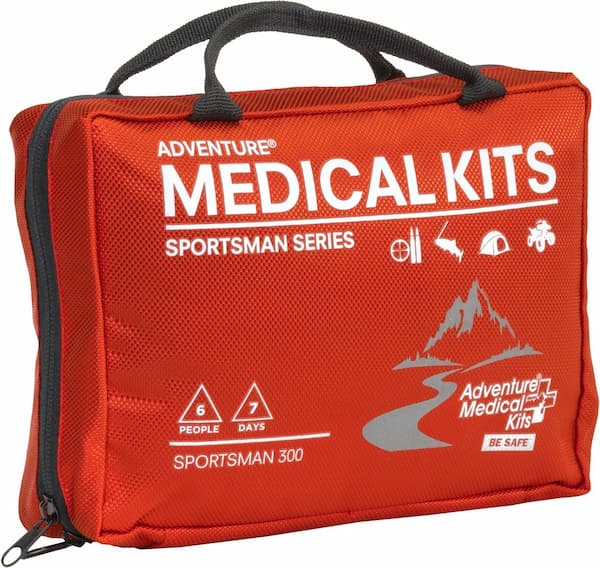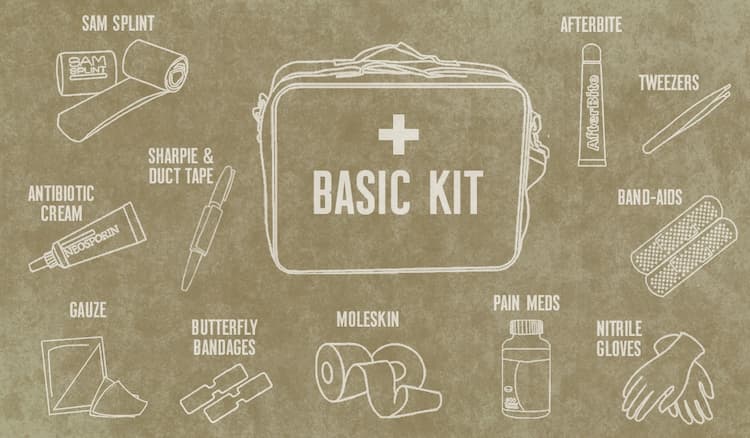
First Aid Kit For Hunters: Essential Things Should Be Included
First, what are the essential things for the first aid kit for hunters?
Band-aids and other bandages, such as butterfly bandages and ace bandages, moore’s skin, glove, alcohol wipe, analgesics such as ibuprofen and allergy drugs, splint, tourniquet (order), tweezers, first aid blanket, gauze roll and gauze pad, medical tape, and more.
A quality first-aid kit is one of the most crucial pieces of equipment for anyone who ventures off the beaten path, but it’s particularly crucial for hunters. A first aid kit should always be in your backpack, whether you’re going on a multi-day hunt in the backcountry or just hitting your favorite trails for the day while setting up trail cams. Remember that the contents of your first-aid kit should vary depending on the trip; for example, you’ll need a more robust selection for an 11-day Dall sheep hunt in the backcountry of Alaska than you would for a quick morning in a tree stand five miles from home. If you are in a hunting camp, you might opt for a larger selection or an ultralight kit to save weight and space.
Please continue reading as I explain the particular information in the post.
Table of Contents
The Bare Essentials Of First Aid Kit For Hunters
The bare minimum items should be included in every first aid kit you bring. These supplies may be useful for minor injuries like a sliver or headaches as well as more serious ones like a broken arm or cut. Items like: should be included in a basic kit.
- Bandaids and other bandages like butterfly and ace bandages
- Moleskin
- Gloves
- Alcohol wipes
- Medication for pain relief like ibuprofen and allergies
- A splint
- Tourniquet (complete with instructions)
- Tweezers
- An emergency blanket
- Gauze in a roll and pads
- Medical tape
- and more.
See more about What Are 10 Items In An Emergency Kit?
Other Important Items Of First Aid Kit For Hunters
In addition to the necessities, you should bring the following items:
- Hemostatic agents, such as QuikClot or Celox, are necessary to quickly stop bleeding. These dressings are essential until you can access qualified medical care because they will speed up the natural clotting process by three times.
- CPR Mask: If you need to perform CPR, you should wear a CPR mask to protect yourself from infectious diseases and the victim’s bodily fluids. Refresh your CPR knowledge and earn your certification by taking a CPR course.
- Chest Seal – Chest seals are used to treat major vein or artery cuts, traumatic abdominal injuries, and punctured lungs. Strong adhesive that can stick to a person even when they are covered in blood, sweat, hair, etc. is applied to one side of the seal. In order to keep the wound clean and guard against further damage until you can get medical attention, the seal forms an airtight and watertight seal over the wound.
- Trauma Shears: These are useful if you need to get to an injury quickly. Clothes, belts, and even seatbelts are easily cut through by them. They will be helpful for cutting tape or gauze as well.
- Bring along a few energy bars, snacks, and water bottles as emergency food and water. Bring water treatment tablets at the very least if bringing bottled water is not an option. See more about How Long Does First Aid Certification Last?

Accidents Reported During Hunting Season
Car Accidents On The Way
During hunting season, there are numerous reports of vehicle-deer collisions, but rain and slick roads in the backcountry can also cause some very serious mishaps.
Falling
Because you’re focused on a target instead of the path you’re taking while walking, you’re more likely to get hurt in the woods by tripping, falling, or slipping.
Animal Attacks
This may occur when a hunter moves the animal they’ve just shot, believing it to be dead, or when another animal shows up because it can smell the wounded animal.
Heart Attacks
Many times, it seems like people only “hike” when they’re hunting, which can be extremely exhausting because you don’t realize how far you’ve actually walked when you’re not used to such long distances. Because you need to have the endurance to travel long distances and because you are exposed to the elements, your physical condition is crucial if you want to be a successful hunter.
Tree Stand Injuries
Numerous hunting injuries have been caused by rain-slicked, slick, or muddy boots on a tree stand, particularly in cases where a safety harness was not used.
The Bottom Line
Statistics show that there are about 120 000 hunting accidents reported each year. All of them were males, between the ages of 25 and 45. You might assume that all hunting-related accidents result in gunshot wounds, but this is not always the case. Most of these wounds—roughly half—occur during the deer hunting season, from October to December, and are caused by gunshots. A first aid kit must be available, regardless of the injury.
Last but not least, I want to say thanks for reading.

